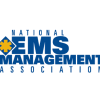Updated June 2015
Throughout this series, we have focused on strategies for EMS leaders who must deal with change that is faster-paced and more chaotic than ever before. This is particularly important in assessing the last of the 11 factors that affect agility: how organizations use and deploy field and administrative resources.
As we’ve done before, we’ll view our last factor through the dimensions of awareness and alertness, leadership orientation, high-value processes and structures and, finally, development of a performance-based culture.
Awareness and alertness
We have good people and operate a better-than-average system. I don’t know why we are constantly operating at a deficit. What should we do? That was the gist of a phone call I recently received from a county manager. When I delved deeper to try to understand the problem, he told me, “Call volumes for emergencies remain constant, but our non-emergency transports are going down every year.
“EMS reimbursements are declining,” he continued, “while expenses and subsidies go up every year. The director says it’s happening everywhere, but the council made it clear that we can’t continue the deficit and are going to close stations this year.”
The director lost credibility and was forced to resign. Now, the city manager is left with what he describes as “a real political mess.”
This county’s situation didn’t happen overnight or even in the span of several years. The system’s schedule and deployment plan hadn’t been adjusted in more than a decade, even though the service area’s population grew and demand patterns changed significantly. The organization only recognized it was fragile when it could no longer cope. Its leaders had simply not seen the need for change.
Leadership orientation
The former director’s orientation was to “wait and see” rather than be proactive. Contrast this to the leadership team at Richmond Fire and Emergency Services (RFES) in Virginia.
The city of Richmond has a fire department with superb fire stop capabilities and an award-winning EMS transport system operated by the Richmond Ambulance Authority. The response dynamics of this city are changing as it moves through a multi-year urban redevelopment plan. Fire Chief Robert Creecy and the RFES leadership team concluded that building a more agile department was essential for continued and future success. Quite frankly, that took courage.
They developed a comprehensive fire department master plan that included objectively looking at leadership styles and performance through the eyes of their stakeholders. They painstakingly quantified the use of resources, unit staffing, deployment, station locations and costs.
Agile organizations welcome and reward this type of critical analysis and take action to integrate new and different ideas into planning and employee engagement processes. In contrast, fragile leaders often suffer from “analysis paralysis,” hoping that their situation will miraculously change or that additional resources will become available so hard decisions can be avoided.
High-value processes and structures
Systems and processes have to balance cost, performance, and both internal and external customer satisfaction. If systems fail to constantly monitor, test assumptions, improve and balance these factors, they become fragile.
Intuitively, emergency service leaders understand that the only way to achieve a response time benchmark is to have a unit in the right place at the right time. To successfully plan resources, an agency needs to measure and account for the unit hour requirements for both moments of demand (the actual call requests and the system’s specific response time requirements). The sum is the total demand load on the system.
For the past 30 years, unit location and call demand have been matched using system status management (SSM) strategies. In agile fire and EMS systems, the geospatial analysis and SSM plans are automated with intelligent vehicle movement systems.
My colleague Guillermo Fuentes is an expert on deployment and system modeling. “Emergency services are on the verge of multiple technology breakthroughs that will advance communications and deployment processes,” he tells me. Science can help us manage demand better than ever before, but to be truly successful, we have to create an organizational culture that values performance.
Development of a performance-based culture
Employees pay attention to what their leaders focus on, so to develop a performance-based culture, leaders have to ask the hard questions. “We look at the reason for each and every response time exception, every day,” explains Rob Lawrence, chief operating officer of the Richmond Ambulance Authority. “It’s through that routine analysis of our processes that system level issues and individual performance issues are identified and can be addressed.
“We have to be agile or we fail to perform,” he continues. “If we fail to perform, people die. Everybody in the organization from the CEO to the person cleaning vehicles has to get that.”
While response time performance is a clear indicator of agility, other, more subtle signs also tell us whether an organization’s culture is deeply performance-based. For example, what is the performance-related benchmark for the agency’s response to a caregiver’s concern or vacation request? To an external customer’s minor complaint? How are these components measured, acted on and reported within the organization?
Remember …
Agile organizations have leaders who anticipate and embrace change on multiple levels, rather than hide or deny the one overriding truth: Change is happening, and it’s happening quickly. They have leaders who are willing and eager to develop processes and systems to measure, anticipate and respond quickly. Last but not least, these organizations have leaders who incorporate into the fabric of the organization’s culture both an understanding of, and commitment to, superior performance.
So let me ask you: Are you agile or fragile?
Editor’s note: This entire series, along with an agility self assessment tool, is available in a single monograph at fitchassoc.com/agility.html.


